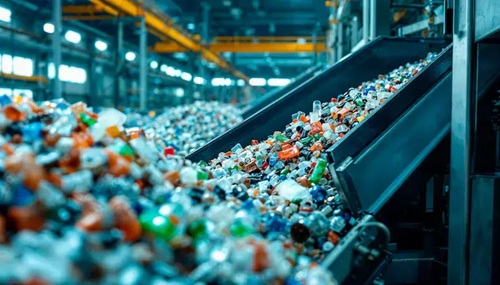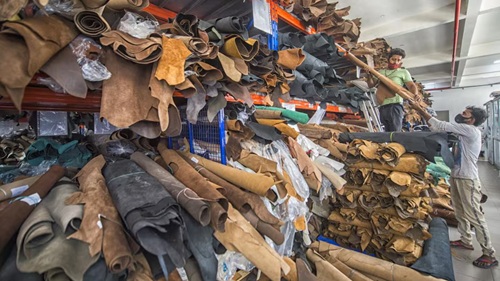The plastic industry in India has become one of the most dynamic sectors of the manufacturing ecosystem — powering industries such as packaging, automotive, healthcare, construction, and consumer goods. By 2025, India’s plastic sector is valued at USD 130–135 billion, contributing significantly to exports, employment, and industrial growth.
While plastics remain essential to modern life, the industry stands at a critical juncture — balancing economic opportunity with environmental responsibility. India’s plastic industry in 2025 is defined by innovation, recycling, and sustainability, supported by government policies and growing corporate accountability.

Industry Overview: A Strong Economic Engine
India is one of the top five consumers of plastics globally, with over 30,000 processing units, most of which are small and medium enterprises (SMEs). The sector employs more than 5 million people directly and indirectly.
According to the Plastindia Foundation, India’s plastic consumption has reached 22–23 million tonnes annually in 2025, compared to 17 million tonnes five years ago. The domestic market demand continues to grow at 8–9% CAGR, driven by packaging, automotive, and infrastructure applications.
Plastic exports have also surged, reaching nearly USD 13 billion, making India a key global player in plastic raw materials, films, laminates, and molded products. Major export destinations include the U.S., UAE, China, and Africa.
Key Growth Drivers in 2025
1. Rapid Industrialization & Urbanization
India’s expanding manufacturing sector — supported by initiatives like Make in India and Atmanirbhar Bharat — continues to boost plastic demand. From injection-molded components in automobiles to PVC pipes in housing projects, plastic products play a vital role in infrastructure and consumer goods growth.
Urban lifestyles, rising disposable incomes, and e-commerce expansion have further accelerated the use of packaging plastics, especially in food delivery, personal care, and FMCG products.
2. Innovation & Technology Adoption
The plastic industry in 2025 is not just about quantity but quality and innovation. Automation, computer-aided design (CAD), and advanced molding technologies are improving efficiency and precision.
India’s producers are also adopting bioplastics, compostable polymers, and recyclable blends to reduce environmental impact. The rise of smart plastics — used in healthcare and electronics — is driving new investment in R&D.
Several companies are implementing Industry 4.0 technologies, using IoT sensors and AI-driven systems for real-time production monitoring, defect detection, and energy optimization.
3. Government Policies & Regulatory Support
Policy intervention has played a decisive role in shaping the industry’s direction in 2025.
The government’s Plastic Waste Management Rules (amended in 2022) and Extended Producer Responsibility (EPR) framework encourage recycling and the reduction of single-use plastics.
The Bureau of Indian Standards (BIS) has also introduced norms for biodegradable plastics, ensuring safety and performance compliance. Meanwhile, the Startup India and MSME incentives have enabled smaller firms to adopt greener technologies.
These reforms are transforming the industry from a linear “use-and-dispose” model to a circular economy built on reuse, recycle, and redesign principles.
4. Booming Packaging & E-Commerce Demand
Packaging remains the largest consumer of plastics in India, accounting for nearly 50% of total usage.
With the exponential rise of e-commerce, food delivery, and organized retail, demand for flexible packaging films, PET bottles, and protective wraps continues to rise.
However, many brands are switching to recyclable and mono-layer packaging, balancing performance with eco-consciousness. Major FMCG and e-commerce giants like Unilever, Amazon, and Zomato have committed to phasing out virgin plastics by 2030, creating new business opportunities for recyclers and bio-based material producers.
5. Export Expansion
India’s cost competitiveness, technical expertise, and growing global demand for plastic intermediates have expanded export potential.
In 2025, exports of PVC resins, polypropylene, laminates, and masterbatches are growing steadily. The establishment of Plastic Parks and Petrochemical Hubs in Gujarat, Maharashtra, and Tamil Nadu is helping attract foreign investment and boost production for export markets.
Challenges Facing the Industry
Despite its rapid growth, the Indian plastic industry faces key challenges that demand strategic focus:
- Environmental Impact: Plastic pollution remains a major global concern. Managing post-consumer waste responsibly is a top priority.
- Recycling Infrastructure: India’s recycling rate is improving but still limited due to fragmented collection and informal waste systems.
- Raw Material Volatility: Dependence on imported petrochemicals makes the industry vulnerable to global crude oil price fluctuations.
- Compliance Costs: Smaller manufacturers face challenges adapting to EPR and sustainability regulations.
- Public Perception: The “anti-plastic” narrative often overlooks recycling innovations and sustainable alternatives within the industry.
Emerging Trends in 2025
- Circular Economy Adoption: Increased focus on recycling, reusing, and biodegradable plastics.
- Bioplastics & Green Polymers: Rapid growth in starch-based and PLA (polylactic acid) products.
- Digital Transformation: Use of automation, predictive maintenance, and digital twins in plastic manufacturing.
- Collaborative Recycling Models: Partnerships between brands and recyclers for waste collection and reuse.
- Material Substitution R&D: Development of lightweight, high-strength composites replacing traditional metals.
Future Outlook
The plastic industry in India 2025 is at a pivotal stage — combining strong market growth with a conscious shift toward sustainability. Over the next five years, the focus will be on circular manufacturing, waste management, and biodegradable innovation.
By 2030, India aims to become a global hub for sustainable polymer production, leveraging its vast manufacturing base, skilled workforce, and progressive policy framework.
If industry leaders and policymakers continue to align innovation with environmental stewardship, India’s plastic industry will evolve from being viewed as part of the problem to being a key driver of sustainable industrial transformation.

